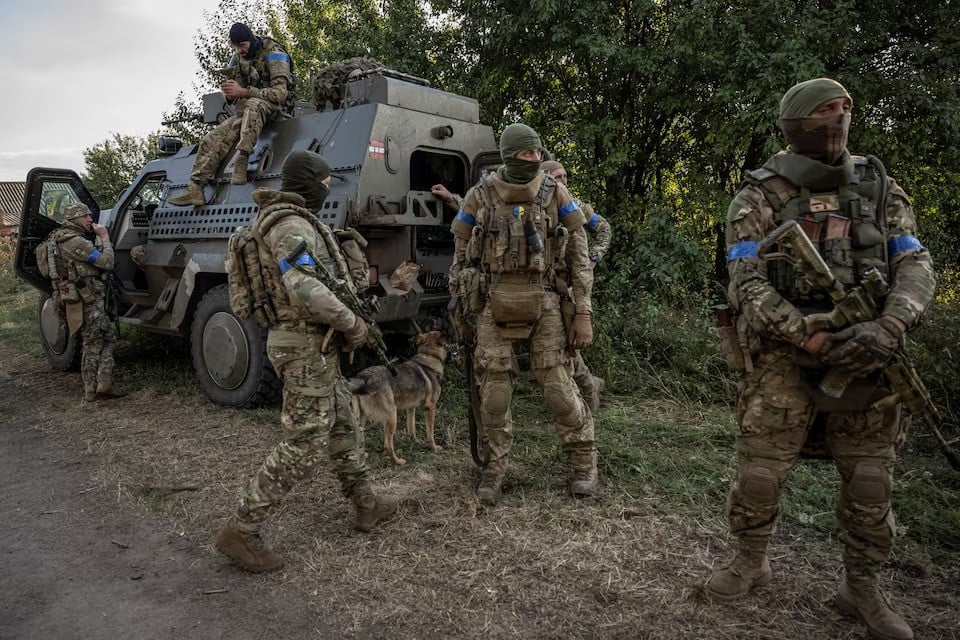
A key aide to Russian President Vladimir Putin alleged on Friday that the West, particularly the US-led NATO alliance, had a hand in planning Ukraine's recent surprise attack on Russia's Kursk region. This claim, however, has been denied by Washington. The attack, which marks the largest incursion into Russia by a foreign power since World War II, began on August 6 when thousands of Ukrainian troops crossed Russia's western border, causing a significant embarrassment for Putin's military.
Ukraine justified the incursion as necessary to compel Russia, which had invaded Ukraine in February 2022, to engage in "fair" peace talks. However, the US and other Western nations, keen to avoid direct military confrontation with Russia, stated that Ukraine had not informed them in advance and that Washington was not involved, although it was reported that weaponry provided by the U.S. and Britain was used on Russian soil.
Nikolai Patrushev, a veteran Kremlin official and influential figure, dismissed these Western denials in an interview with the Izvestia newspaper. He claimed that the operation in Kursk was planned with the involvement of NATO and Western intelligence services, without providing any evidence to support his assertion. Patrushev suggested that without Western support, Kyiv would not have undertaken such a bold operation on Russian territory. His comments implied that Ukraine's first acknowledged incursion into sovereign Russian territory carries a significant risk of escalating the conflict.
In response to the situation, Putin chaired a meeting of Russia's Security Council, which included Patrushev. During the meeting, Putin indicated that the discussion would focus on "new technical solutions" being employed in what Russia refers to as its "special military operation."
Patrushev also stated that Washington's actions have set the stage for Ukraine to potentially lose its sovereignty and territory. Meanwhile, Ukraine announced that it had established a military commandant in the area it controlled, despite Russia intensifying its offensives in eastern Ukraine. Russia's defense ministry claimed to have repelled a series of Ukrainian attacks along the Kursk frontline, while Kursk regional governor Alexei Smirnov reported that Ukraine had destroyed a road bridge over the Seym River in the Glushkovsky district. This destruction could impede the ongoing evacuation of around 20,000 residents from the frontier district, according to state news agency TASS.
Although the Ukrainian attack has exposed vulnerabilities in Russian defenses and altered the public narrative of the conflict, Russian officials insisted that Ukraine's "terrorist invasion" would not alter the course of the war. Russia has been advancing in the key eastern sector of the 1,000-kilometer (620-mile) front for most of the year and holds a significant numerical advantage. Currently, Russia controls 18% of Ukrainian territory.
After more than 10 days of fighting, Ukraine maintains control of at least 450 square kilometres (175 square miles) of territory, which is less than 0.003% of Russia's landmass. Despite the relatively small scale of the incursion, for Putin, it represents a significant escalation and crosses a critical red line.
One Russian source informed Reuters that the incursion could embolden hardliners in Moscow who advocate for a larger-scale war, but Putin faces a difficult decision. He has tried to frame the conflict as a limited "special military operation" that should not disrupt daily life in Russia, while also portraying it as a historic struggle against a West that disregards Moscow's interests and seeks to weaken Russia.
The US, which has stated that it cannot allow Putin to win the war in Ukraine, views the surprise incursion as a defensive move that justifies the use of US weaponry, according to officials in Washington. However, there are concerns about the potential complications as Ukrainian troops advance further into Russian territory.
A US official, speaking anonymously, expressed worries that if Ukraine began capturing Russian villages and other non-military targets using US weapons and vehicles, it could be perceived as pushing the limits Washington has set to avoid a direct NATO-Russia conflict.
Russia's defense ministry released footage that it claimed showed a Russian drone destroying a US-made Stryker armored combat vehicle in the Kursk region.


1731637727-0/Bear--(1)1731637727-0-165x106.webp)

1731619853-0/ice-cream-(1)1731619853-0-165x106.webp)












COMMENTS
Comments are moderated and generally will be posted if they are on-topic and not abusive.
For more information, please see our Comments FAQ